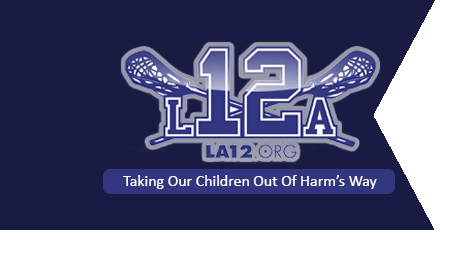The Louis J. Acompora Memorial Foundation was founded in memory ofLouis Acompora – a 14-year-old athlete who died from sudden cardiac arrest (SCA) following an injury in a lacrosse game. The only effective treatment to reverse the cause of most cases of SCA or ventricular fibrillation, to a normal heart rhythm, is defibrillation. These are guidelines for the prevention of sudden cardiac arrest.
Risk Factors
Early detection is crucial for children and adults. That’s why it’s important to be aware of the risk factors for SCA, which include:
- A family history of coronary artery disease
- Smoking
- High blood pressure
- High blood cholesterol
- Obesity
- Diabetes
- A sedentary lifestyle
- Drinking too much alcohol (more than one to two drinks a day)
- A previous episode of cardiac arrest or a family history of cardiac arrest
- A previous heart attack
- A personal or family history of other forms of heart disease, such as heart rhythm disorders, congenital heart defects, heart failure, and cardiomyopathy
- Age: the incidence of sudden cardiac arrest increases with age, especially after age 45 for men and age 55 for women
- Being male: men are two to three times more likely to experience sudden cardiac arrest
- Drug abuse
To reduce the chances of SCA, it’s important to:
- Live a healthy lifestyle (eat a nutritious well-balanced diet, stay physically active, and don’t smoke)
- Get regular medical checkups
- Address the risk factors that can be modified
Early Diagnosis and Screening
It is difficult to predict SCA. People at risk for SCA, including SCA survivors, may benefit from the following tests:
- Electrocardiogram (ECG)
- Blood tests (e.g., cardiac enzyme, electrolyte, drug, hormone)
- Imaging tests (e.g., chest X-ray, nuclear scan, echocardiogram)
- Electrophysiological (EP) testing and mapping
- Ejection fraction (EF) testing, using magnetic resonance imaging (MRI), a nuclear medicine scan, or computerized tomography (CT) scan
- Coronary catheterization, or angiogram
SCA in Children and Young Adults
Children and young adults are not routinely screened for heart conditions. Most youth who suffer SCA have an undetected heart condition. A thorough family history and physical examination that includes an electrocardiogram (ECG or EKG) as a baseline test can help detect approximately 60% of the heart conditions that can lead to SCA. Approximately 2% of youth that are heart-screened are diagnosed with a heart abnormality or concern; 1% are diagnosed with a life-threatening heart condition such as Hypertrophic Cardiomyopathy (HCM), Long QT Syndrome (LQTS), Wolff-Parkinson-White Syndrome (WPW) or Arrhythmogenic Right Ventricular Dysplasia (ARVD).
Frequently, the warning signs and symptoms of a heart condition in children go undetected or are misdiagnosed. Those who work and live with youth must be aware of these signs and symptoms. If any exist, they should be reported to the child’s physician immediately. Medical professionals must be more acutely aware of the warning signs and symptoms of a heart condition.
Refer to these references for more information:
- American Academy of Pediatrics Pre-participation Physical Evaluation
- American Heart Association 12-step Screening
- Bethesda Guidelines
- Policy statement on Pediatric Sudden Cardiac Arrest
If a child is diagnosed with a heart condition, there are many precautionary steps that can be taken to prevent the likely outcome of SCA, including lifestyle modifications, medication, surgical treatments and implanting a pacemaker and/or implantable cardioverter defibrillator (ICD).

